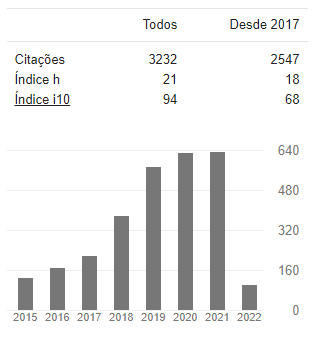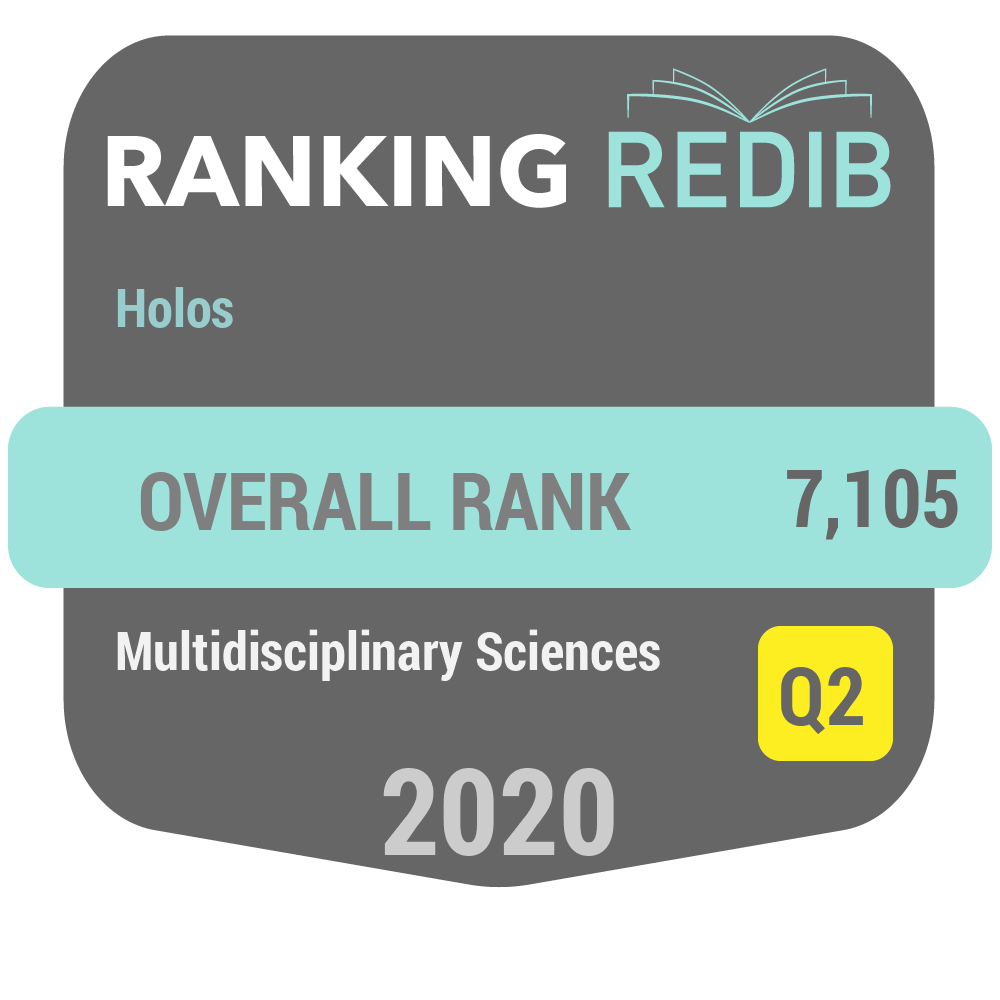STATISTICAL ANALYSIS OF PROPERTIES OF HIGH-VOLUME FLY ASH CONCRETES AS CEMENT REPLACEMENT
DOI:
https://doi.org/10.15628/holos.2020.9805Palavras-chave:
Fly ash concrete, High-volume fly ash, Mechanical properties, Statistical analysisResumo
This paper had the objective of statistically analyzing the effects of the substitution of high levels of fly ash in concretes. It was produced reference concretes and concretes containing fly ash with substitutions of 30, 50, and 70% of the Portland cement mass. The water/cement material relations in these concretes ranged between 0.45, 0.50, and 0.55. With these parameters, it was conducted a factorial project 32 to analyze the results concerning the mechanical properties of compressive strength and consistency index of the concretes. It was elaborated nine concrete mixtures and their replicates. With the results obtained, it was performed a statistical analysis using ANOVA, Pareto Diagram and Tukey Test. The regression models obtained were adequate, with acceptable values of R2. The validation of the model occurred through two concretes with water/cement material ratios of 0.475 and 60 % of substitution of fly ash in relation to the Portland cement. This mixture presented an average compressive strength of 33.38 MPa at 115 days. The study showed that the ground fly ash was the most significant factor to the mechanical resistance of the concretes, significantly contributing to the increase of the compressive strength in advanced ages.
Downloads
Referências
AMERICAN SOCIETY FOR TESTING AND MATERIALS. (2017) ASTM C618-17: Standard specification for coal fly ash and raw or calcined natural pozzolan for use in concrete. Philadelphia.
Anthony, J. (2014) Design of experiments for engineers and scientists. UK: ELSEVIER.
BRAZILIAN ASSOCIATION OF TECHNICAL STANDARDS. (1998) NBR NM 67: Concrete - Slump test for determination of the consistency. Rio de Janeiro.
BRAZILIAN ASSOCIATION OF TECHNICAL STANDARDS. (2009) NBR 12821: Concrete - Preparation in laboratory - Procedure. Rio de Janeiro.
BRAZILIAN ASSOCIATION OF TECHNICAL STANDARDS. (2015) NBR 12653: Pozzolanic Materials - Requirements. Rio de Janeiro.
BRAZILIAN ASSOCIATION OF TECHNICAL STANDARDS. (2018) NBR 16697: Portland cement - Requirements. Rio de Janeiro.
Bae, S., Meral, C., Oh, J., Moon, J., Kunz, M., & Monteiro, P. J. M. (2014) Characterization of morphology and hydration products of high-volume fly ash paste by monochromatic scanning x-ray micro-diffraction (?-SXRD). Cement and Concrete Research, 59(1) 155-164. DOI: 10.1016/j.cemconres.2014.03.001.
Cho, Y. K., Jung, S. H., & Choi, Y. C. (2019) Effects of chemical composition of fly ash on compressive strength of fly ash cement mortar. Construction and Building Materials, 204(1) 255–264. DOI: 10.1016/j.conbuildmat.2019.01.208.
Devore, J. L. (2006) Probabilidade e estatística para engenharia e ciências. São Paulo, SP: Pioneira Thomson Learning.
Hemalatha, T., & Ramaswamy, A (2019) A review on fly ash characteristics towards promoting high volume utilization in developing sustainable concrete. Journal of Cleaner Production, 147(1) 546–559. DOI: 10.1016/j.jclepro.2017.01.114
Ignjatovíc, I. S., Sas, Z., Dragas, J., Somlai, & J., Kovács, T. (2017) Radiological and material characterization of high volume fly ash concrete. Journal of Environmental Radioactivity, 168(1) 38–45. DOI: 10.1016/j.jenvrad.2016.06.021
Malhotra, V. M., & Mehta, P. K. (2012) High-Performance High-Volume Fly Ash Concrete. 4 ed. Berkeley, USA: SCMSD.
Mehta, P. K., & Monteiro, J. P. M. (2014) Concreto: microestrutura, propriedades e materiais. 2 ed. São Paulo, SP: IBRACON.
Moghaddam, F., Sirivivatnanon, & V., Vessalas, K. (2019) The effect of fly ash fineness on heat of hydration, microstructure, flow and compressive strength of blended cement pastes. Case Studies in Construction Materials, 10, e00218.
Montgomery, D.C. (2009) Design and Analysis of Experiments. 5 ed. New York, USA: John Wiley & Sons.
Neville, A. M. (2016) Properties of concrete. 5 ed. Harlow: PEARSON.
Siddique, R. (2004) Performance characteristics of high-volume Class F fly ash concrete. Cement and Concrete Research, 34(1) 487–493. DOI: 10.1016/j.cemconres.2003.09.002.
Startsoft INC. Statistica Ultimate Academic, v. 13.0, Licence Number 135-726-299. http://www.statsoft.com.br.
Sun, J., Shen, X., Tan, G., & Tanner, J. E. (2019) Compressive strength and hydration characteristics of high-volume fly ash concrete prepared from fly ash. Journal of Thermal Analysis and Calorimetry, 136(2) 565-580.
Supit, S. W. M., Shaikh, F. U. A., & Saker P. K. (2014) Effect of ultrafine fly ash on mechanical properties of high volume fly ash mortar. Construction and Building Materials, 51(1) 278-286. DOI: 10.1016/j.conbuildmat.2013.11.002
Wang, X.-Y., & Park, K.-B. (2015) Analysis of compressive strength development of concrete containing high volume fly ash. Construction and Building Materials, 98(1) 810–819. DOI: 10.1016/j.conbuildmat.2015.08.099.
Xu, G., Tian, Q., Miao, J, & Liu, J. (2017) Early-age hydration and mechanical properties of high volume slag and fly ash concrete at different curing temperatures. Construction and Building Materials, 149(1) 367–377. DOI: 10.1016/j.conbuildmat.2017.05.080.
Yildirim, K., & Sumer, M. (2013) Effects of sodium chloride and magnesium sulfate concentration on the durability of cement mortar with and without fly ash. Composites Part B: Engineering, 52(1) 56-61. DOI: 10.1016/j.compositesb.2013.03.040.
Yu, J., Lu, C., Leung, C. K. Y, & Li, G. (2019) Mechanical properties of green structural concrete with ultrahigh-volume fly ash. Construction and Building Materials, 147(1) 510-518. DOI: 10.1016/j.conbuildmat.2017.04.188.





































